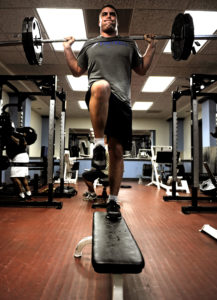As programs like P90X and CrossFit have become more popular, terms like “muscle confusion” and other buzzwords have gained traction in the training community. While this term itself is mostly nonsensical, it is ultimately referring to training variation and that does have value. The human body adapts quickly to new stimuli, so the longer a stimulus stays the same the fewer improvements are made. This is where differential training comes in to play.
What Are Motor Learning and Differential Training?
Motor learning is the change that takes place in the ability to perform a motor skill as the result of practice or experience. Motor learning is a category of behavioral neuroscience and involves studying ways to improve the rate of skill acquisition (Schollhorn, 2016).
Differential training is a tool used to speed the skill acquisition process through the use of novel inputs that theoretically force the body to find the most efficient way to complete the task.
Applying Differential Training
Typical differential training involves the use of creative movement variations and unique stimuli during training along with very little feedback from the coach in terms of corrections. In the context of the throwing this could mean throwing a variety of implements, throwing from a variety of positions, like up hill or down hill, throwing off of a tilted mound, or with a variety of run-ups. The variety is only limited by your imagination. However, coaches must be careful that the differential training actually resembles the goal movement enough to carry over and isn’t just novel for the sake of being novel. For example, if you’re right handed pitcher, throwing a ball with a lacrosse stick is novel, but unlikely to have the desired effect.
In order to determine the necessary level of variation in a training program a coach must consider the requirements of the sport and current capabilities of the athlete in areas such as optimal levels of strength, power, endurance, and movement variability in game situations.
Extreme variability can be very helpful for young athletes and may enhance their long-term athletic development (hence the push to play multiple sports). However, as athletes gain experience in their sport specificity becomes more important (check out my article on specificity here) and fewer benefits are gained from extreme variation. Variation still has value at this stage, but just needs to be used more sparingly.
Another factor to consider is coaching feedback. While little feedback from coaches may be typical with differential training in order to allow the body to find its own best pattern, a study by Hossner et al. found that learning was more pronounced when participants received corrections in addition to differential training and also when the differences between consecutive practices were relatively small.
This means that a happy medium between absolute variability and a more typical periodized, repetition based protocol may be optimal.
Motor learning is a complex process without a definitive blueprint for every athlete. An individualized approach is necessary for optimal results and differential training is merely one tool at a coach’s disposal.
Resources
Photo:
“Lieutenant tackles NFL dream” by Staff Sgt. Brian Valencia
Henz D, Schollhorn W (2016) Differential Training Facilitates Early Consolidation in Motor Learning. Frontiers in Behavioral Neuroscience.
Hossner EJ, Kach B, Enz J. (2016) On the optimal degree of fluctuations in practice for motor learning. Human Movement Science.


